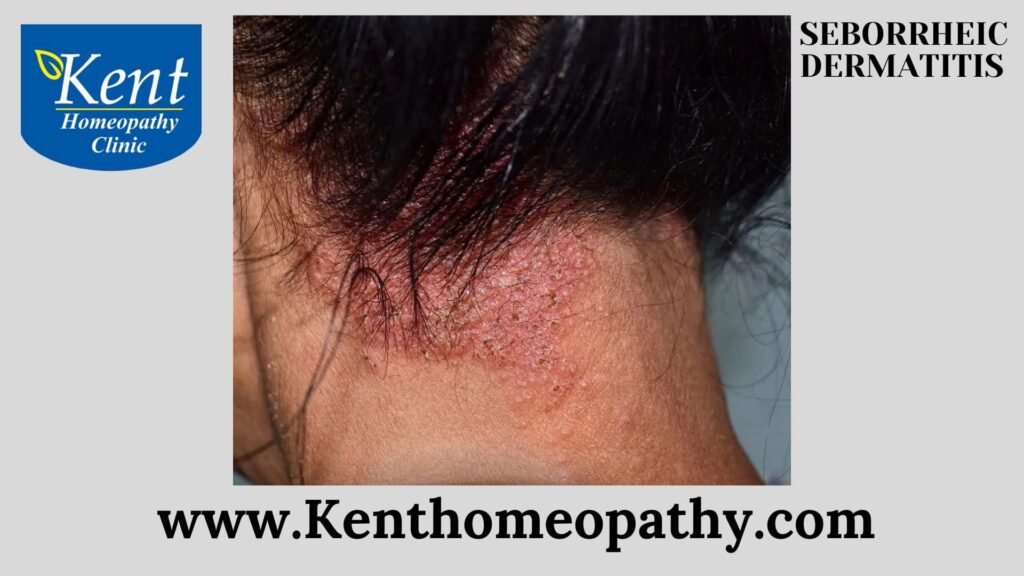Seborrhoeic Dermatitis

Seborrheic Dermatitis: Unraveling Symptoms, Causes, and Types
Seborrheic dermatitis is a common skin condition characterized by red, itchy, and flaky patches, typically on areas of the body where sebaceous (oil) glands are more prominent. While not a serious medical condition, it can be chronic and recurrent, causing discomfort and affecting the quality of life. Understanding the symptoms, causes, and types of seborrheic dermatitis is crucial for effective management and relief.
Symptoms:
- Red, Inflamed Skin:
– Seborrheic dermatitis often presents with red or pink patches of skin, particularly in areas rich in sebaceous glands, such as the face, scalp, and upper chest.
- Scaly, Flaky Skin:
– A hallmark of this condition is the presence of yellowish or white, greasy scales or flakes on the affected skin. The scales may vary in size and are commonly found on the scalp, eyebrows, and behind the ears.
- Itching and Irritation:
– Itching is a common symptom, and scratching the affected areas can exacerbate inflammation and lead to secondary infections.
- Oily or Greasy Appearance:
– Skin affected by seborrheic dermatitis may appear oily or greasy due to an overproduction of sebum, the skin’s natural oil.
- Dandruff:
– On the scalp, seborrheic dermatitis often manifests as dandruff, with visible flakes of skin in the hair or on clothing.
- Rash in Skin Folds:
– In some cases, seborrheic dermatitis can occur in skin folds, such as those around the nose, under the breasts, or in the groin area, resulting in a rash.
Causes:
- Yeast Overgrowth (Malassezia):
– The yeast Malassezia is naturally present on the skin but can proliferate in individuals with seborrheic dermatitis. The yeast’s interaction with sebum triggers an inflammatory response.
- Genetic Predisposition:
– A genetic predisposition may contribute to an increased susceptibility to seborrheic dermatitis. Individuals with a family history of the condition may be more prone to developing it.
- Hormonal Factors:
– Changes in hormone levels, such as those occurring during puberty, pregnancy, or with certain medical conditions, may influence the development of seborrheic dermatitis.
- Neurological Factors:
– Neurological conditions, including Parkinson’s disease, have been associated with an increased risk of seborrheic dermatitis.
- Immune System Response:
– The immune system’s response to the presence of Malassezia or other factors on the skin may contribute to the inflammatory nature of seborrheic dermatitis.
- Environmental Factors:
– Harsh weather conditions, especially cold and dry weather, can exacerbate seborrheic dermatitis symptoms. Stress and fatigue can also play a role.
Types:
- Scalp Seborrheic Dermatitis (Dandruff):
– One of the most common types, it causes flaky skin on the scalp, often resulting in dandruff. The condition may extend to the forehead, ears, and neck.
- Facial Seborrheic Dermatitis:
– This type affects the face, particularly the areas around the nose, eyebrows, and behind the ears. Redness, scaling, and greasy skin are typical features.
- Seborrheic Dermatitis on the Chest and Back:
– Seborrheic dermatitis can extend to the upper chest and back, presenting as red, scaly patches. This form may be mistaken for other skin conditions, such as psoriasis.
- Infantile Seborrheic Dermatitis (Cradle Cap):
– Common in infants, cradle cap manifests as thick, yellow or brown scales on the scalp. It is generally harmless and tends to resolve on its own.
- Seborrheic Dermatitis in Skin Folds:
– Skin folds, such as those around the nose, under the breasts, and in the groin area, can be affected, leading to a rash with redness and scaling.
Contact to know more
Contact
Timings
Monday to Saturday:
11:00 AM to 02:30 PM
06:30 PM to 09:00 PM
